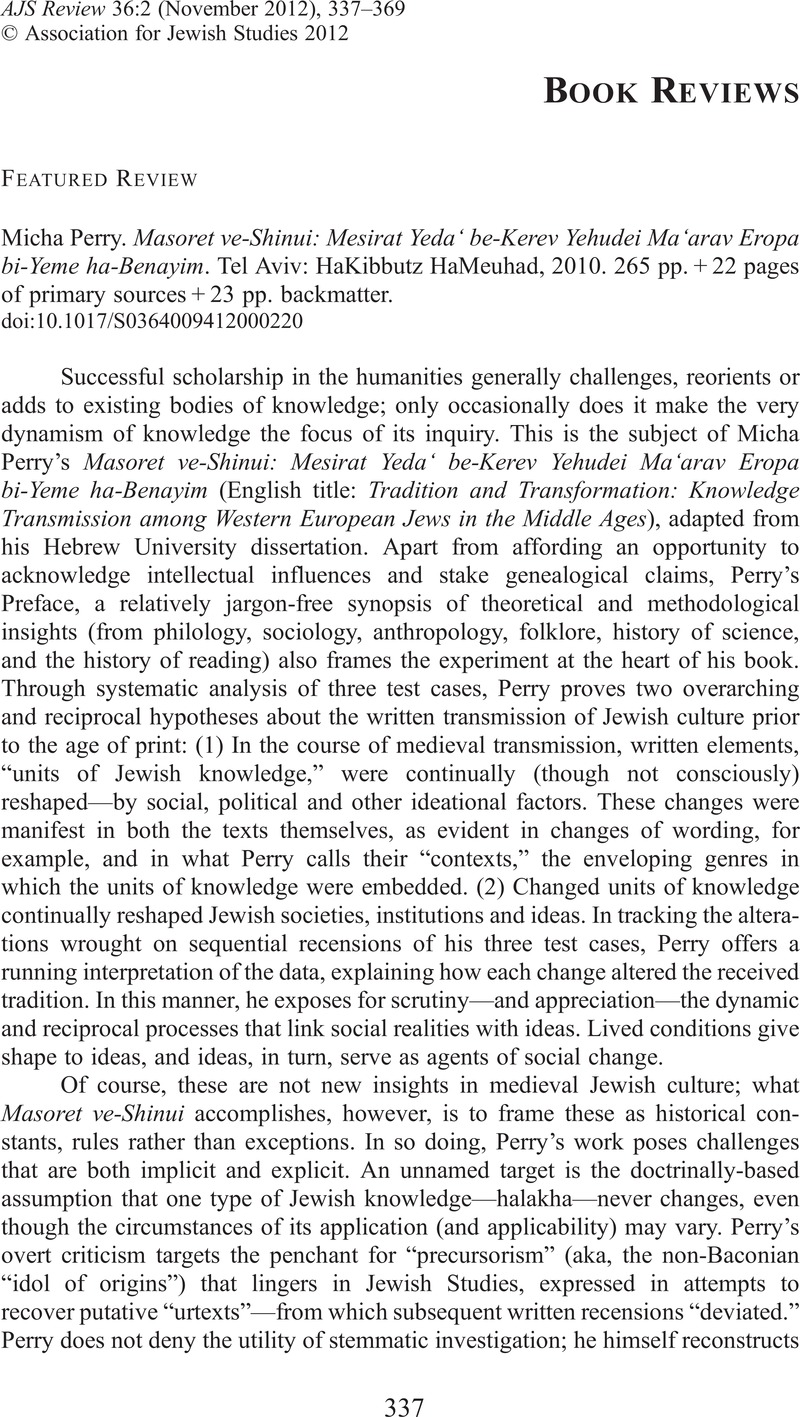No CrossRef data available.
Published online by Cambridge University Press: 20 November 2012

1. Stroumsa, Sarah, Maimonides in His World: Portrait of a Mediterranean Thinker (Princeton, NJ: Princeton University Press, 2009), 62–70CrossRefGoogle Scholar; Fishman, Talya, Becoming the People of the Talmud: Oral Torah as Written Tradition in Medieval Jewish Cultures (Philadelphia: University of Pennsylvania Press, 2011), 83CrossRefGoogle Scholar.
2. See Fishman, T., “Claims About the Mishna in the Epistle of Sherira Gaon: Islamic Theology and Jewish History” in Beyond Religious Borders: Interaction and Intellectual Exchange in the Medieval Islamic World, ed. Freidenreich, D. and Goldstein, M. (Philadelphia: Penn Press, 2011), 65–77; 184–192Google Scholar.
3. See Fishman, Becoming the People of the Talmud, especially chapters 5, 6 and epilogue.
4. Mack, Hananel, “Madu‘a ne-‘elmu sefarav shel Rabi Moshe ha-Darshan?” Alpayyim 32 (2008): 149–176Google Scholar. When, at the early fifteenth century Disputation at Tortosa, the apostate Geronimo de Santa Fe (formerly Joshua HaLorqi) sought to score a point against his Jewish interlocutors by citing a passage from Rashi in the name of Rabbi Moshe Ha-Darshan, the Jewish respondents from Aragonese communities rejected his comment, saying, “Rabbi Moshe Ha-Darshan was a darshan (preacher), and not a Talmudist.” The Hebrew protocol of the disputation appears in Eisenstein, D., ’Oẓar Ha-Vikuḥim (New York, 1928), 111Google Scholar, and Kabak, Y., Ginzei Nistarot (Bamberg, 1868) 2: 45–55Google Scholar.
5. Schwartz, Seth, Imperialism and Jewish Society: 200 B.C.E. to 640 C.E. (Princeton, NJ: Princeton University Press, 2001)Google Scholar; idem, “Rabbinization in the Sixth Century,” in The Talmud Yerushalmi and Graeco-Roman Culture III, ed. Schäfer, Peter (Tübingen: Mohr Siebeck, 2002), 65Google Scholar.
6. For a taste of this burgeoning body of research, see Becker, A. and Reed, A., eds., The Ways That Never Parted? Jews and Christians in Late Antiquity and the Early Middle Ages (Minneapolis: Fortress Press, 2007)Google Scholar, and many publications by Reeves, John, including “Exploring the Afterlife of Jewish Pseudepigrapha in Medieval Near Eastern Religious Traditions: Some Initial Soundings,” Journal for the Study of Judaism in the Persian, Hellenistic and Roman Period 30 (1999): 148–177CrossRefGoogle Scholar.
7. Rustow, Marina, Heresy and the Politics of Community: The Jews of the Fatimid Caliphate (Ithaca: Cornell University Press, 2008)Google Scholar.